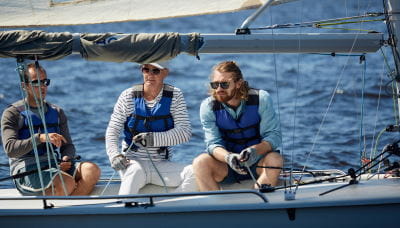WA drowning rate falls by 13 percent
The 2019 WA Drowning Report has found that overall drowning rates decreased during 2018/19. The report, released today, includes both fatal and non-fatal drowning data to capture the full impact of drowning on the West Australian community.
There were 234 drowning incidents recorded in WA in 2018/19 with a drowning rate of 8.98 per 100,000. 29 of these were fatal drownings, while 103 people were admitted to hospital following a non-fatal drowning, and 102 attended the emergency department.

Overall drowning rates decreased by 13.0% when compared with the 2017/18 financial year, while drowning trends show an average increase of 3.3% over the past decade in our state. Males continued to be at a greater risk of drowning, and were twice as likely to drown than females, accounting for 68% of drownings compared to 31%.
Drowning prevention for toddlers and young children continues to be a major issue, with children aged 0-4 and 5-14 at the highest risk. Culturally diverse communities were again over-represented in drowning data, with 17.1% of drownings involving a person born overseas, while 6% of drownings involved Aboriginal Australians.
People in regional WA were almost twice as likely to drown than those living in the Perth metropolitan area with the highest rates recorded in the Midwest, Kimberley and South West regions. Drowning incidents were most likely to occur in open water and home swimming pools, and while swimming, boating or recreating around water.
They key risk factors for drowning include:
- Presence of a pre-existing medical condition (37.9%)
- Environmental factors such as poor weather/water conditions (37.9%)
- Poor swimming ability (24.1%)
- Not wearing a lifejacket or using appropriate safety equipment (24.1%)
- Inexperience in the activity being undertaken (13.8%)
- Consumption of alcohol (BAC >0.05) (6.9%)

The report also includes detailed reviews of boating-related drowning and drowning at inland waterway locations such as rivers, lakes and dams. In addition, profiles for each of WA’s 10 health regions can be found within the report highlighting key localised drowning trends and risk factors over the period from 2009-2019.
The data will help to inform relevant policy, programs and service delivery for Royal Life Saving WA and other stakeholders. The production of this report is supported by the Government of Western Australia – Department of Health.
You can download the full report by visiting the link below.
